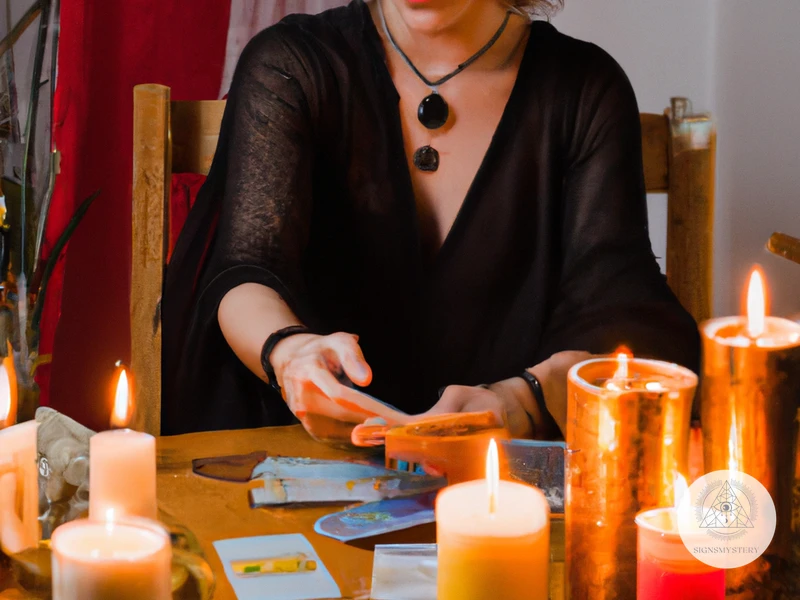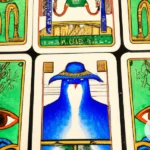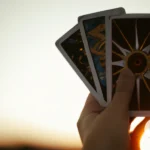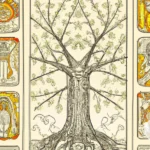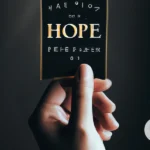Introduction
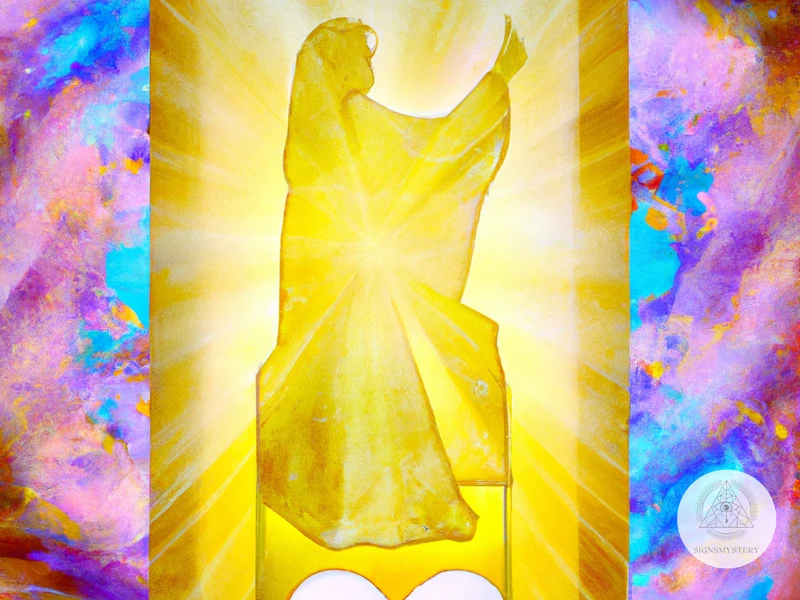
For many people, the world of tarot card readings can seem mysterious and intimidating. There are countless negative stereotypes associated with tarot readings, leaving many to believe that tarot card readers are nothing more than frauds. However, this couldn’t be further from the truth. Tarot readings can offer valuable insights and guidance for those seeking answers to life’s most pressing questions. In this article, we will debunk the common stereotypes surrounding tarot card readings and explore the true purpose and benefits of this ancient practice. Whether you’re a skeptic or a believer, keep an open mind as we delve into the fascinating world of tarot.
What is Tarot?
Tarot is a deck of 78 cards with a unique and distinctive set of symbols, characters, and images. Each card in the deck represents a specific concept or idea, ranging from different archetypes and personalities to abstract concepts and universal forces. Tarot is commonly known as a divination tool for predicting the future or providing insight into the hidden aspects of a person’s life.
The Origin of Tarot Cards
Tarot cards first appeared in Europe during the 15th century as a simple card game. Over time, the deck evolved into a tool for divination and self-discovery, which was used by mystics, psychics, and spiritual seekers. The symbols and images on the cards were inspired by various religious and mythological traditions, including Christianity, Judaism, Ancient Egypt, and Ancient Greece.
The Structure of Tarot Cards
| The Major Arcana | The Major Arcana consists of 22 cards that represent significant lessons, experiences, and life events. Each card holds a unique meaning, and they are often used to explore the deeper aspects of an individual’s psyche or spiritual journey. |
| The Minor Arcana | The Minor Arcana consists of 56 cards that are divided into four suits, each containing ten numbered cards and four court cards. The suits are Wands, Cups, Swords, and Pentacles, and they represent different areas of life, such as the spiritual, emotional, mental, and material domains. |
The Use of Tarot Cards
Tarot cards are commonly used for divination or gaining insight into a particular situation, as they offer a symbolic language that can be interpreted in various ways depending on the reader’s intuition and experience. Tarot readings can be conducted for individuals or groups, and they can address specific questions or provide general guidance.
However, it is important to note that tarot cards should not be used as a substitute for professional advice or medical treatment. Tarot readings are not a guarantee of the future, but rather a tool for personal growth and self-understanding.
Despite the misconceptions and stereotypes surrounding tarot, its value as a tool for personal growth and insight is undeniable. The history and structure of tarot cards reveal a complex and intriguing system of symbols and archetypes that can be used to explore the deeper aspects of our world and ourselves.
The Negative Stereotype of Tarot Card Readers
Tarot cards have been associated with negative stereotypes for years. Some common misconceptions about tarot card readers include the belief that they are frauds, that they engage in satanic practices, and that tarot readings are inaccurate or confusing. However, these negative stereotypes are often based on misinformation and misunderstandings about the true purpose and history of tarot readings.
Frauds
One of the most common negative stereotypes about tarot card readers is that they are fraudulent and only interested in taking people’s money. This myth implies that tarot card readers are not skilled in their craft and simply make up vague predictions that could apply to anyone. However, many tarot card readers take their work very seriously and undergo extensive training to develop their skills.
Satanism
Another common myth about tarot card readers is that they engage in satanic practices. This myth is often perpetuated by those who confuse tarot readings with other forms of divination such as Ouija boards or palm reading. However, tarot cards have no inherent connection to Satanism or any other religious practice. In fact, tarot cards have been used for centuries as a tool for self-reflection and personal growth.
Inaccuracy
Some people believe that tarot readings are inaccurate or confusing, and that the messages they receive from tarot cards are meaningless. However, tarot card readings are not meant to be a form of absolute prediction, but rather a tool to help people gain insight into their lives and make informed decisions. Tarot card readers work to interpret the messages of the cards and provide valuable guidance to clients.
To better understand the history and purpose of tarot card readings, it is important to separate fact from fiction. Learning about the history of tarot divination and dispelling common misconceptions about tarot cards can help people appreciate the value of this ancient practice.
If you want to read more about the history of tarot divination, click here. If you want to learn more about the misconception of tarot readings being connected to Satanism, click here. If you want to find out more about common misunderstandings of tarot cards, click here.
Why the Stereotype is False
Despite the negative stereotypes and beliefs surrounding tarot card readers, there is actually no evidence to support the idea that all tarot readers are fraudulent. These stereotypes often stem from a lack of understanding about what tarot truly is, and what its purpose is intended to be. Many people fall prey to misconceptions about tarot readings, mistakenly believing that they are evil or inaccurate. In reality, tarot readings are a helpful tool for self-reflection and personal growth, and can have a profound impact on the lives of those who receive them. In the following sections, we will dive deeper into the true purpose of tarot readings, explore the history of tarot, and discuss how to find a reliable tarot card reader.
The True Purpose of Tarot Readings
The true purpose of tarot readings is often misunderstood due to the negative stereotype surrounding it. Contrary to popular belief, tarot readings are not meant to predict the future or provide absolute answers to life’s questions. Instead, tarot readings are intended to provide guidance and insight to individuals who seek it.
Tarot cards serve as a tool for self-reflection, and the reader’s interpretations act as a mirror for the individual to see their own thoughts and emotions more clearly. In essence, tarot readings are a form of therapy, allowing individuals to connect with their subconscious and work on personal growth and development.
During a tarot reading, the reader will work to identify patterns or themes in the individual’s life, and offer guidance on how to navigate them. This guidance is not prescriptive but rather a way for the individual to gain perspective and make informed decisions. Tarot readings are not meant to solve all problems or provide a quick fix, but rather to encourage personal reflection and responsibility.
Tarot cards can also be used as a tool for meditation and mindfulness. The act of shuffling the cards and pulling them for a reading can be a calming and centering experience. It can help individuals to connect with their intuition and gain a deeper understanding of themselves.
In short, the true purpose of tarot readings is to offer guidance and insight, promote self-reflection and personal growth, and encourage individuals to connect with their intuition. It is not a tool for predicting the future or solving all problems, but rather a means to gain a greater understanding of oneself and the world around them.
Want to learn more about the history of tarot and its origins? Read our article on the myth that tarot cards originated in Egypt.
The Benefits of Tarot Readings
Tarot readings offer a multitude of benefits for those seeking guidance and clarity in their lives. Here are some of the most significant advantages:
- Insight: Tarot readings can provide insight into specific areas of a person’s life. By interpreting the cards and their meanings, tarot readers can offer deep insights into various aspects of a person’s life, such as relationships, career, and personal growth.
- Confirmation: People often turn to tarot readings for confirmation or validation of their own intuition or feelings about a particular situation. A tarot reading can offer confirmation of one’s own thoughts, feelings, or intuitions about a specific matter.
- Clarity: Tarot readings can bring clarity to complex situations. When we are in the midst of a difficult decision, it can be difficult to see the situation objectively. Tarot readings can help people to see the situation from a different perspective and gain clarity on a path forward.
- Self-discovery: Tarot readings can facilitate self-discovery and personal growth. By exploring the meanings of the cards, people can gain a deeper understanding of themselves, their own motivations, and their strengths and weaknesses. This can lead to greater self-awareness and personal development.
- Empowerment: Tarot readings can be empowering for individuals. By gaining insight and clarity, people are often able to make better decisions and choices for themselves. This can lead to a sense of empowerment in one’s own life.
- Reduced stress: Tarot readings can help reduce stress and anxiety. By gaining insight and clarity on a particular issue, people can feel more at ease and less anxious. This can lead to a greater sense of calm and peace in one’s life.
Tarot readings offer a unique and valuable experience for those seeking guidance and clarity in their lives. With insights, confirmation, clarity, self-discovery, empowerment, and reduced stress, tarot readings can be a powerful tool for personal growth and development.
The History of Tarot
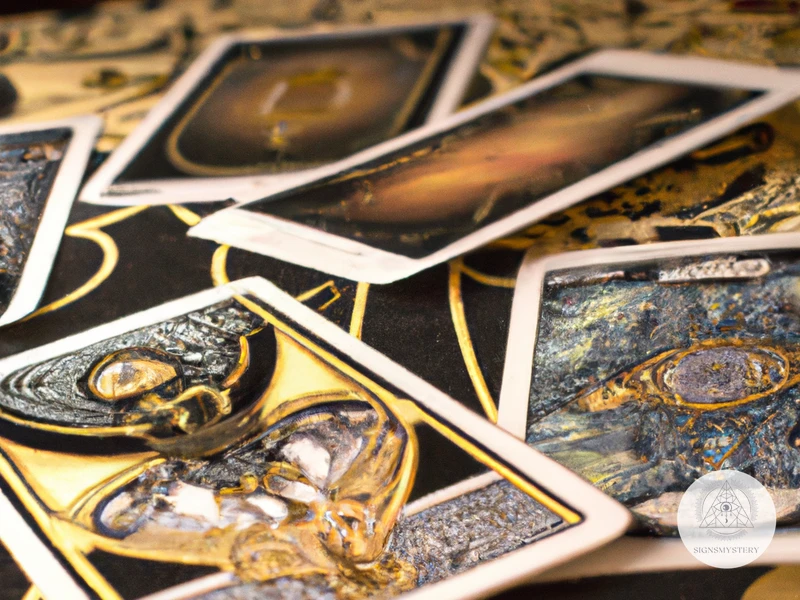
When exploring the rich history of tarot, it’s important to note that its origins are somewhat shrouded in mystery. While tarot readings are often associated with divination and esoteric knowledge, the earliest tarot decks were actually used for playing card games in Europe during the 14th century.
The first known tarot decks were created in Italy and comprised of 78 cards, which were divided into the minor arcana and major arcana. The minor arcana cards were similar to modern playing cards, featuring four different suits and ten numbered cards, as well as court cards. The major arcana, on the other hand, consisted of 22 symbolic cards that were rich in imagery and esoteric meaning.
Over time, the use of tarot decks for divination purposes became increasingly popular. During the 18th and 19th centuries, occultists and mystics began to ascribe spiritual significance to each tarot card, creating a complex system of symbolism and interpretation.
One of the most influential figures in the development of modern tarot was French occultist Eliphas Levi, who wrote extensively about the tarot’s esoteric meaning and its ties to other mystical traditions. Levi’s writings helped to popularize tarot as a tool for spiritual growth and self-discovery, paving the way for later writers and practitioners.
In the 20th century, tarot experienced a resurgence of interest thanks to the influential work of authors such as Aleister Crowley and Arthur Edward Waite, who created the Rider-Waite tarot deck in 1910. The Rider-Waite deck, with its iconic illustrations and easily accessible symbolism, remains one of the most popular tarot decks in use today.
Despite its long and fascinating history, the practice of tarot continues to evolve and change with each new generation of readers and practitioners. Today, tarot readings are often seen as a powerful tool for exploring the inner workings of the mind and the soul, helping people to gain insight, clarity, and guidance on their journey through life.
The Role of the Tarot Card Reader
Tarot card readers play a vital role in providing accurate and insightful readings to clients. They are responsible for interpreting the cards and conveying their messages in a way that is meaningful and helpful. Through their intuitive abilities and knowledge of the tarot, a skilled reader can guide clients towards greater self-awareness, deeper understanding, and positive change.
Intuitive abilities: A tarot card reader must possess innate intuitive abilities to effectively read the cards. They must be attuned to their own thoughts and emotions, as well as those of their clients. Through their intuition, they can pick up on subtle energies and insights that may not be immediately apparent.
Knowledge of tarot: A tarot card reader must have a deep understanding of the tarot, including the meanings of each card, as well as their various interpretations in different contexts. This knowledge allows them to draw on the symbolism and meanings of each card, combining them in unique ways to provide insightful readings.
Interpretation: The ability to interpret the cards and convey their messages to clients is one of the most important roles of a tarot card reader. They must be skilled at interpreting the symbolism of each card and relating it to the client’s specific situation. A good reader can offer insight, guidance, and clarity that helps clients make better decisions and achieve their goals.
Empathy: A tarot card reader must be able to connect with their clients on a deep level, demonstrating empathy and understanding. Clients may come to a reading feeling a range of emotions and it is essential that the reader is able to provide a safe and supportive environment for them to discuss their concerns.
Confidentiality: Tarot card readers are often privy to intimate details about their clients’ lives. It is crucial that they maintain strict confidentiality to protect their clients’ privacy. Clients must feel comfortable knowing that their personal information will not be shared outside of the reading itself.
A tarot card reader plays a multifaceted role in providing insightful and meaningful readings to clients. They must have a combination of intuitive abilities, knowledge of tarot, interpretation skills, empathy, and confidentiality to be effective. Through their expertise, they can help clients gain a deeper understanding of themselves and navigate life’s challenges with greater clarity, purpose, and joy.
Understanding Tarot Readings
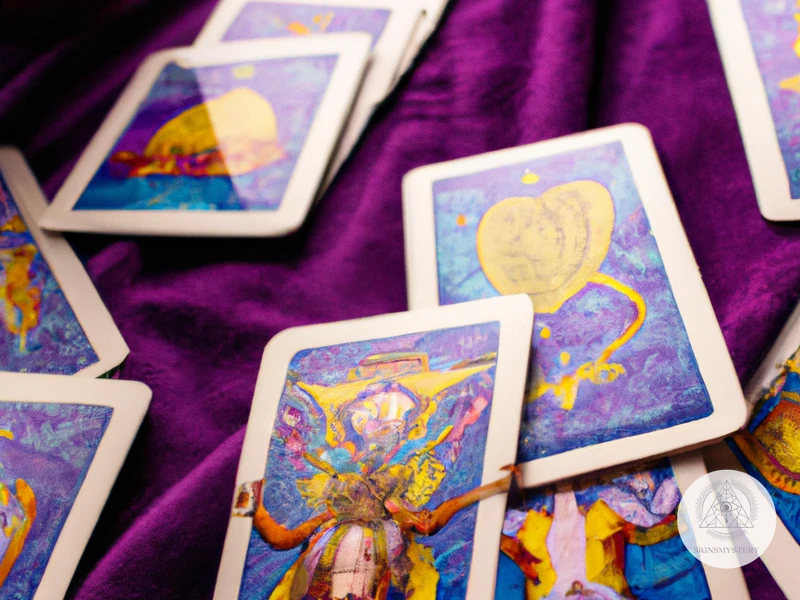
As you dive deeper into the world of tarot, understanding the nature and mechanics of tarot readings becomes crucial. The way a tarot reading works is often shrouded in mystery, leaving many curious individuals with unanswered questions. With the right guidance, however, you can uncover the secrets of tarot and learn how to glean profound insights from this powerful divination tool. In this section, we will explore the different types of tarot readings, how they work, and what you can expect during a reading session.
How Tarot Readings Work
Tarot readings work by tapping into the energy of the person receiving the reading, as well as the energy of the Tarot deck itself. The Tarot deck consists of 78 cards, each with its own unique symbolism and meaning. During a reading, the Tarot card reader will shuffle the deck and ask the person receiving the reading to focus on their question or situation they would like guidance on.
The cards drawn during the reading will provide insight and guidance based on the person’s energy and the question they are asking. The cards are not meant to predict the future, but rather to offer guidance and clarity in the present moment.
Some Tarot readers also use their psychic abilities to enhance their readings. They may pick up on energy or information not revealed by the cards themselves. However, it is important to note that not all Tarot readers are psychic and not all psychics use Tarot cards in their practice.
The Tarot deck is divided into two main categories: the Major Arcana and the Minor Arcana. The Major Arcana consists of 22 cards, each representing a significant archetype or life lesson. The Minor Arcana consists of four suits, similar to a regular deck of playing cards. Each suit has 14 cards, including 10 numbered cards and four court cards (page, knight, queen, and king).
During a reading, the Tarot card reader will interpret the cards based on their position in the spread and their relationship to the other cards in the spread. The reader will look for patterns and connections between the cards to provide a cohesive and meaningful interpretation.
Tarot readings combine the energy of the person receiving the reading, the symbolism of the Tarot deck, and the intuitive skills of the Tarot card reader to provide guidance and insight into the person’s current situation.
The Different Types of Tarot Readings
Tarot readings can vary based on the type of spread used, or the way the cards are laid out during the reading. Here are a few examples of the different types of tarot readings that can be done:
- Celtic Cross Spread: This is one of the most common spreads used in tarot readings, and it typically involves ten cards. It’s a great reading for gaining insight into both past and future events and can reveal obstacles that might be affecting your current situation.
- Relationship Spread: This spread is designed to provide insight into a romantic relationship. It usually involves six cards and can help identify issues within the relationship and provide guidance on how to address them.
- Three-Card Spread: This is a quick and simple spread that’s great for beginners. It involves three cards and can be used to gain insight into a situation or decision you’re facing.
- Five-Card Spread: Similar to the Three-Card Spread, this spread provides a bit more detail and is a good option for gaining insight into both the present and future.
- One-Card Spread: As the name suggests, this involves drawing a single card, which can provide insight into a specific question or situation.
- Chakra Spread: This spread is designed to provide insight into the state of your chakras, or energy centers. It typically involves seven cards, with each card representing a different chakra.
As you can see, there are many different types of tarot readings depending on your needs and preferences. It’s important to find a reader who is knowledgeable about the different types of spreads and can help guide you towards one that’s best suited for your situation.
What to Expect During a Tarot Reading
During a tarot reading, you can expect the tarot card reader to shuffle the cards and lay them out in a specific pattern, known as a spread. Each spread is designed to answer a different type of question or provide insight into a particular area of your life. It is important to keep an open mind and understand that the cards themselves do not provide specific answers, but rather act as a tool for the reader to interpret and guide their intuition.
Here’s what to expect during a tarot reading:
- The reader will ask you to focus on your question or intention for the reading. It’s important to have a clear question or intention in mind before the reading begins.
- Once you have voiced your question or intention, the reader will shuffle the deck while focusing on your energy and the question at hand.
- The reader will then lay out the cards in the chosen spread, each position representing a different aspect of your question or situation.
- The reader will begin to interpret the cards and their placement in the spread, providing insight, guidance, and potential outcomes based on their intuitive interpretation.
- The reader may ask for clarification or additional information from you throughout the reading to ensure they are providing the most accurate and useful guidance possible.
- It is important to remember that the cards and the interpretation provided by the reader should not be taken as absolute truth or predictions, but rather as guidance and insight to aid in your decision-making and personal growth.
- After the reading is complete, you will have the opportunity to ask any follow-up questions or seek clarification on any points brought up during the reading.
Remember, a tarot reading is a collaborative effort between the reader and the querent (the person receiving the reading). Keeping an open mind and being willing to engage in this collaborative effort can lead to a valuable and insightful experience.
Common Misconceptions About Tarot Readings
As with any practice that involves spirituality or mysticism, tarot readings are shrouded in misconceptions and misunderstandings. It can be perplexing to navigate through all the false information and biased opinions that surround the tarot card reading industry. However, in order to fully appreciate and benefit from the practice, it’s important to separate fact from fiction. In this section, we’ll unpack some of the most common misconceptions about tarot readings and why they are far from the truth.
Tarot Readings are Evil or Satanic
One of the most persistent misconceptions about tarot readings is that they are evil or satanic. This belief most likely stems from the association of tarot cards with mystical or supernatural powers, and the concept of divination, which involves attempting to gain knowledge of the future or the unknown. However, the truth is that tarot readings are not inherently evil or satanic, and the majority of tarot card readers do not use their practice for dark or malevolent purposes.
Here are the reasons why this belief is false:
- Tarot cards are not inherently evil or satanic: Tarot cards are simply a tool, like a hammer or a pen. They have no inherent power, good or bad. It is the intent and energy of the person using the tool that determines how it is used. Just as a hammer can be used to build a house or destroy one, tarot cards can be used for positive or negative purposes.
- Tarot readings are not inherently evil or satanic: Tarot readings are a method of gaining insight and guidance, much like talking to a trusted friend or therapist. The aim of a tarot reading is to help the querent, or the person seeking the reading, gain clarity and understanding about a situation or question. There is nothing inherently evil or malevolent about seeking guidance in this way.
- The association of tarot with evil or satanic practices is largely a product of Hollywood: Popular media such as movies and TV shows have often depicted tarot readings and other forms of divination as dark, mysterious, and even dangerous. However, these portrayals are largely sensationalized and not based in reality. They perpetuate the false belief that tarot readings are inherently evil or satanic, when in fact they are simply a tool for gaining insight and guidance.
It is important to remember that tarot card readers are not devil worshippers or practitioners of black magic. They are simply people who use a tool to help others gain insight and guidance. If you are considering a tarot reading, it is important to approach it with an open mind and without fear or apprehension.
Tarot Readings are Confusing or Inaccurate
It is a common misconception that Tarot readings are confusing or inaccurate. However, this is far from the truth. Tarot card readers are highly skilled and have spent years mastering their craft. They are trained to interpret the symbolism of the cards and provide accurate insights into a person’s past, present, and future.
There are various reasons why some people find Tarot readings confusing or inaccurate. One reason could be that they do not fully understand the nature of Tarot readings. Many people believe that Tarot readings are meant to predict the future. However, the purpose of Tarot readings is not to provide a definitive answer to the future but rather to offer guidance and insights into a person’s life that can help them make informed decisions moving forward.
Another reason why some people may find Tarot readings confusing is that they do not fully understand the symbolism of the cards. Tarot cards are full of rich symbolism and imagery, which can be difficult to interpret for those who are not familiar with them. However, a skilled Tarot card reader can help explain the meaning behind each card and provide insights that are specific to a person’s situation.
Lastly, some may believe that Tarot readings are inaccurate because they have had a negative experience with an unqualified Tarot card reader. It is important to do your research when choosing a Tarot card reader and make sure that they have the necessary skills and qualifications to provide an accurate reading.
Tarot readings are not confusing or inaccurate if approached with an open mind and performed by a qualified and skilled Tarot card reader. By understanding the true purpose of Tarot readings, the symbolism of the cards, and taking the time to find a qualified reader, anyone can benefit from the insights and guidance that Tarot readings can provide.
| Reasons for confusion or inaccuracy in Tarot readings | Explanation |
|---|---|
| False belief that Tarot readings predict the future | The purpose of Tarot readings is not to provide a definitive answer to the future but rather to offer guidance and insights into a person’s life that can help them make informed decisions moving forward. |
| Lack of understanding of the symbolism of the cards | Tarot cards are full of rich symbolism and imagery, which can be difficult to interpret for those who are not familiar with them. However, a skilled Tarot card reader can help explain the meaning behind each card and provide insights that are specific to a person’s situation. |
| Negative experience with an unqualified Tarot card reader | It is important to do your research when choosing a Tarot card reader and make sure that they have the necessary skills and qualifications to provide an accurate reading. |
Tarot Readings are Only for the Spiritual or Mystical
There’s a common misconception that tarot readings are only for the spiritual or mystical. Some people believe that only those who already have a deep understanding and interest in spirituality can fully appreciate or benefit from tarot readings. However, this couldn’t be further from the truth.
While it’s true that tarot readings can be a powerful tool for those on a spiritual journey, they can also be used by anyone looking for guidance, clarity or direction. Tarot readings are not limited to any specific belief system or religion, and can be used by people from all walks of life.
In fact, many people seek out tarot readings specifically because they are looking for a way to connect with their inner selves and gain a deeper understanding of themselves and their lives. Tarot readings can help individuals gain clarity on important decisions, navigate challenging situations, and uncover hidden truths about themselves.
Tarot readings can be a fun and entertaining way to explore unknown aspects of oneself, and can be enjoyed purely as a novel experience. Many people who don’t consider themselves spiritual or mystical have found value in tarot readings simply for the entertainment factor or as a way to gain new insights about themselves.
Overall, tarot readings are not limited to any specific group of people, and can be useful and enjoyable to anyone with an open mind and willingness to explore their inner selves. Don’t let the misconception that tarot readings are only for the spiritual or mystical hold you back from experiencing the many benefits they can offer.
To summarize, tarot readings can be used by anyone from any background, belief system or religion, and can provide valuable insights and guidance in all areas of life.
Choosing a Tarot Card Reader
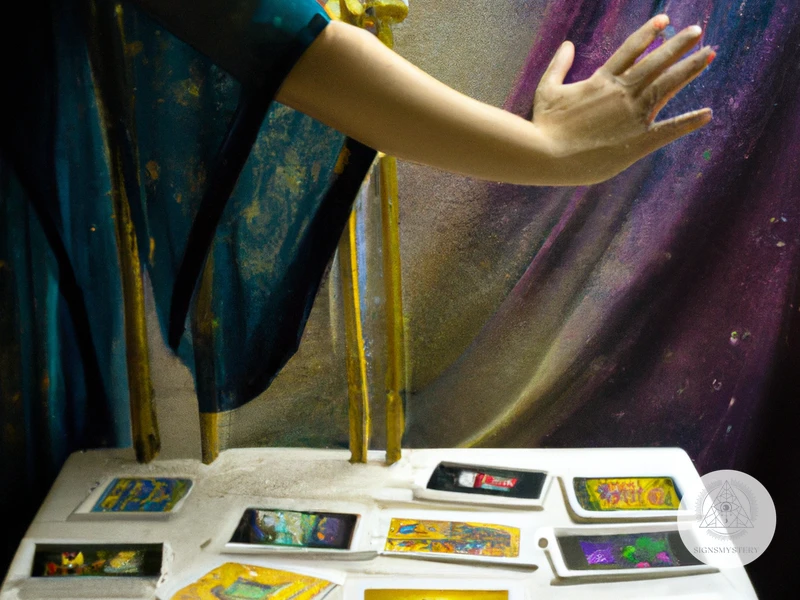
As you decide to dive into the world of tarot readings, you may find yourself overwhelmed with the various options available for tarot card readers. Choosing a qualified and reliable tarot card reader can be a perplexing task, but is essential for a worthwhile and positive experience. With the negative stereotype of tarot card readers being frauds and charlatans, it’s crucial to find a reader who is genuine and trustworthy. In this segment, we will guide you through the process of selecting the right tarot card reader for your needs.
What to Look for in a Qualified Tarot Card Reader
When seeking out a reputable tarot card reader, there are several key factors to keep in mind. It’s important to remember that not all tarot readers are created equal, and finding the right one for you can make all the difference in your experience. Here are some things to consider:
| Experience and Education | Look for a tarot card reader who has extensive experience and training in the art of tarot reading. This can include certification programs, workshops, or apprenticeships with masterSubscribe to Our NewsletterSign up to receive the latest news and updates. |
| Ethics and Professionalism | Make sure the tarot card reader adheres to strict ethical guidelines, including confidentiality, respect for the client, and honesty in their readings. They should also be professional and courteous in their interactions and provide a comfortable and safe environment for their clients. |
| Specialization and Style | Consider the reader’s area of specialization and their style of reading. Some may focus on relationship or career readings, while others may put emphasis on spiritual growth or self-discovery. It’s important to find a reader whose style and focus aligns with your own needs and beliefs. |
| Availability and Accessibility | Look for a reader who is easy to communicate with and has availability that works with your schedule. This can include in-person appointments, phone or video readings, or email readings. Make sure to take into account any time zone differences or language barriers. |
| Reviews and Reputation | Research the reader’s reputation and read reviews from previous clients. This can give you insight into their professionalism, accuracy, and overall effectiveness as a tarot card reader. It’s important to choose someone who has a positive track record and a trustworthy reputation. |
By taking these factors into consideration, you can ensure that you find a qualified tarot card reader who is a good fit for your individual needs and will provide you with a meaningful and insightful tarot reading experience.
Where to Find a Reliable Tarot Card Reader
Finding a reliable tarot card reader can be a challenging task. However, there are several ways to ensure that you are choosing the right person for your tarot reading session.
Word of Mouth
One of the most effective ways to find a reliable tarot card reader is through word of mouth. Ask your friends, family, or colleagues if they have enjoyed a tarot reading with someone they trust. Personal recommendations can be very valuable in finding a tarot card reader who is genuine, professional and experienced.
Online Reviews
Online reviews can also be a helpful resource in finding a reliable tarot card reader. Look for reviews on websites, social media platforms or directories like Yelp or Google My Business. Reviews can provide insights into the experiences of past clients and help you determine whether a tarot card reader is right for you.
Directories
Directories or registries of ethical and reliable tarot card readers also exist, so you might want to search for these. Such directories usually have expert tarot readers who are experienced, professional and ethical. They might also have stringent vetting processes, and readers might have to prove their skills or expertise in tarot before they’re listed.
Local Metaphysical or Spiritual Centers
You can find experienced and reliable tarot card readers at local metaphysical or spiritual centers. These centers usually have psychic fairs or events where readers come together to offer their services. In this way, you can have a chance to meet some readers and evaluate their services before booking a personal appointment.
Perusing Classified Ads
Checking classified ads for tarot card readers is an option, though you need to be cautious. It can be difficult to confirm the trustworthiness and experience of amateur tarot card readers who advertise their services through classified ads.
Using one or a couple of these methods and verifying that the tarot card reader is professional and reliable can ensure that your tarot reading session is a positive experience.
How to Prepare for Your Tarot Reading
As you approach your tarot reading, you may feel a mix of excitement and uncertainty. After all, this is a unique opportunity to gain insight into your life and future. However, it’s natural to wonder how you can best prepare for this experience. Preparing for your tarot reading involves several important steps, including cleansing your energy, formulating your questions, and maintaining an open mind and positive attitude. By taking the time to prepare properly, you can ensure that you get the most out of your tarot reading and leave feeling empowered and inspired. Let’s take a closer look at each of these steps and how they can help you prepare for your upcoming tarot reading.
Cleansing Your Energy
Before getting a tarot reading, it’s important to “cleanse” your energy. This simply means getting rid of any negative energy or emotions that might cloud your judgement during the reading. Here are some ways to cleanse your energy before your tarot reading:
- MEDITATION: Meditation is a great way to clear your mind and calm your thoughts. You can do a guided meditation or simply sit in silence for a few minutes and focus on your breath.
- SAGE: Burning sage is a common practice for cleansing energy. It’s called smudging, and it’s an ancient Native American tradition. Simply light the sage and let the smoke waft around you, focusing on any negative energy being removed.
- CRYSTALS: Certain crystals are believed to have cleansing properties. You can carry them with you, wear them as jewelry or place them around your workspace to help absorb any negative energy. Examples of these crystals are amethyst, black tourmaline, and selenite.
- WATER: Water is a powerful symbol of cleansing and healing. You can take a shower or bath and visualize the water washing away any negative energy. You can also drink water, which hydrates your body and helps to flush your system of toxins.
Remember, cleansing your energy is not only beneficial for tarot readings, but for your overall wellbeing. Taking steps to clean any negative energy from your life can help you feel lighter and more positive.
Formulating Your Questions
When preparing for a tarot reading, it’s important to give some thought to the questions you want to ask. The questions you ask will dictate the direction of the reading and the insights you receive. Here are some tips for formulating effective questions:
| Tip | Description |
|---|---|
| Focus on yourself | It’s important to ask questions that relate to your own life and situation, rather than asking questions about other people or events outside of your control. This will help you gain insight into your own thoughts and feelings. |
| Be specific | Try to avoid asking general questions that are too broad. Instead, ask specific questions that can be answered with clarity and depth. For example, instead of asking “What is my future going to be like?” ask “What steps can I take to improve my career in the next six months?” |
| Avoid yes or no questions | Questions that can only be answered with a “yes” or “no” don’t provide much nuance to a reading. Instead, ask open-ended questions that can lead to deeper insights and exploration. For example, instead of asking “Will I find love soon?” ask “What can I do to improve my love life?” |
| Phrase questions positively | Avoid negative phrasing in your questions, as this can lead to negative thinking and unhelpful insights. For example, instead of asking “Why am I so unlucky in love?” ask “What can I do to attract more positive relationships into my life?” |
| Stay open-minded | While it’s important to have specific questions in mind, it’s also important to stay open to unexpected insights and guidance. Don’t become too fixated on one particular answer, as the cards may reveal different perspectives and possibilities than you anticipated. |
By taking the time to formulate thoughtful and specific questions for your tarot reading, you’ll be able to gain deeper insights and guidance into your life’s path. Remember to stay open-minded and trust the process, and you may be surprised by the insights you receive.
Maintaining an Open Mind and Positive Attitude
During a tarot reading, it’s essential to maintain an open mind and positive attitude to fully benefit from the session. It’s natural to feel a bit anxious or skeptical when seeing a tarot card reader for the first time, but it’s important to approach the experience with curiosity and willingness to learn something about yourself.
To help you maintain an open mind and positive attitude, you can follow these tips:
| Acknowledge Your Feelings | Before the reading, take a few moments to reflect on your emotions and thoughts. If you’re feeling nervous or doubtful, acknowledge those feelings and remind yourself that a tarot reading is a safe and supportive space for exploration. |
| Avoid Judging the Reader | Everyone has their own views on tarot and spirituality, so it’s important not to judge or criticize the reader based on their beliefs. Instead, focus on the reading itself and keep an open mind to the messages presented to you. |
| Listen Carefully | To get the most out of your reading, actively listen to the reader’s interpretation of the cards. Don’t try to guess what they’re going to say or interrupt them mid-sentence. Give them the respect and attention they deserve. |
| Ask Questions | If you don’t understand what the reader is saying or want to explore a certain topic further, don’t be afraid to ask questions. This can help clarify the meaning of the cards and deepen your understanding of the reading. |
| Embrace the Unknown | Remember, tarot readings aren’t about predicting the future with certainty. Instead, they offer insights and guidance that are subject to interpretation. Embrace the unknown and be open to the unexpected. |
Maintaining an open mind and positive attitude can help you get the most out of your tarot reading. By following these tips, you’ll be able to fully engage with the experience without letting your doubts or fears hold you back. Remember, a tarot reading can be a powerful tool for self-discovery and growth, so approach it with curiosity and authenticity.
What to Do After Your Tarot Reading
After your tarot reading, you may be wondering what to do next. You might be feeling a sense of curiosity, intrigue, or even uncertainty about the insights you received. It’s essential to take some time to reflect on your reading and determine how you can apply the information to your life. Here are some suggestions for what you can do after your tarot reading to ensure that you get the most out of the experience.
Reflecting on Your Reading
After your tarot reading, it’s important to take some time for reflection and to process the information that was presented to you. Here are some tips for reflecting on your reading:
| 1. Journaling | Consider taking some time to write down your thoughts and feelings about your reading. This can help you gain a deeper understanding of the messages that were conveyed and allow you to revisit them later on. |
| 2. Meditation | Take some quiet time to sit and meditate on your reading. Focus on the images and messages that were presented to you during the session. |
| 3. Talking with a friend or counselor | It can be helpful to discuss your reading with a trusted friend or counselor. Talking about it out loud can help you process the information and gain a new perspective on it. |
| 4. Applying the messages | Think about how you can apply the messages from your reading to your life. Consider making changes or taking action based on the information that was presented to you. |
Remember that reflecting on your reading is a personal and individual process. Allow yourself the time and space to process the information at your own pace. And don’t forget to be kind and gentle with yourself during this time of introspection.
Taking Action on Your Reading
Once your tarot reading is over, the next step is to take action on the insights and guidance provided by the tarot cards. This involves considering the advice given by the tarot card reader and making practical changes in your life accordingly. Here are a few steps you can take to ensure that you make the most of your tarot reading:
| Step | Action |
|---|---|
| 1 | Review your notes: Go over the notes you took during the tarot reading and reflect on the insights and guidance that were provided. |
| 2 | Identify key takeaways: Identify the key takeaways from the reading and think about how you can apply them to your life. This might involve changing your behavior or attitudes, or taking specific actions to achieve your goals. |
| 3 | Create an action plan: Create an action plan that outlines the steps you need to take to achieve your goals. This might involve setting specific goals, breaking them down into smaller steps, and creating a timeline for achieving them. |
| 4 | Hold yourself accountable: Hold yourself accountable for making the changes you need to make. This might involve tracking your progress, seeking support from friends or family, or working with a coach or therapist to help you stay on track. |
| 5 | Follow up with your tarot card reader: Finally, follow up with your tarot card reader to share your progress and get additional guidance as needed. This can help you stay motivated and focused as you work to achieve your goals. |
By taking action on your tarot reading, you can use the guidance provided by the cards to make positive changes in your life. Whether you’re looking to achieve a specific goal, improve your relationships, or simply gain greater insight into yourself, a tarot reading can be a powerful tool for personal growth and transformation. So, take some time to reflect on your reading, create an action plan, and start taking steps to create the life you desire.
Scheduling a Future Reading
After experiencing a tarot reading, many people may decide that they want to schedule another one in the future. It’s important to remember that tarot readings are not a one-time fix, but rather a continuous journey of self-discovery and introspection. Here are some tips on scheduling a future reading:
- Reflect on Your Initial Reading: Before scheduling another reading, take some time to reflect on your initial experience. Did the reading provide you with valuable insights or guidance? Were there any specific cards or messages that resonated with you? Understanding what you gained from your first reading can help you formulate new questions for your next one.
- Identify Your Goals: Think about what you hope to gain from your next tarot reading. Do you have a specific question or problem that you want guidance on? Are you seeking broader insights into your life or relationships? Clearly identifying your intentions for the reading can help you choose the right reader and type of reading.
- Research Tarot Readers: If you enjoyed your first reading with a particular reader, consider scheduling another with them. However, if you want to try a different reader or are new to tarot readings, take some time to research different options. Look for reviews or recommendations from trusted sources and choose a reader who aligns with your goals and values.
- Schedule in Advance: Many tarot readers have busy schedules, so it’s important to schedule your reading in advance. This will ensure that you can get an appointment with the reader you want and provide you with time to prepare for the session.
- Prepare for Your Next Reading: Just as you prepared for your first reading, take some time to prepare for your next one. Be open and receptive to new insights, formulate specific questions, and maintain a positive attitude.
Remember, tarot readings can be a powerful tool for self-discovery and personal growth. Scheduling a future reading can provide valuable guidance and insights into your life, relationships, and future path.
Conclusion
As our exploration of Tarot comes to a close, it’s clear that the negative stereotypes surrounding Tarot card readers are unjustified. The mystery and mystique of Tarot have been shrouded in misconceptions for far too long, causing needless skepticism and even fear in some individuals. However, through our examination of the history, purpose, and benefits of Tarot readings, we’ve dispelled these misconceptions and revealed the truth behind this ancient practice. So, what is the verdict on Tarot card readers? They are not frauds or charlatans, but rather spiritual guides offering a unique and transformative experience for those willing to embrace it. Let’s explore why Tarot readings should be considered a life-changing experience.
Summing Up the Truth About Tarot Card Readers
When it comes to tarot card readings, it’s easy to fall prey to the misconception that they are all fraudulent or unnecessary. However, after exploring the history, purpose, and benefits of tarot readings, it becomes clear that this negative stereotype is false.
The truth is: Tarot card readings can offer insights and guidance for individuals seeking clarity and direction in their lives.
Contrary to popular belief: Tarot card readings are not evil or satanic. They are also not confusing or inaccurate, provided you choose a qualified tarot card reader.
Additionally: Tarot readings are not strictly for the spiritual or mystical. They can be helpful for anyone who wants to gain insight into their life and the challenges they face.
Choosing a reliable tarot card reader and preparing for a reading with a positive attitude can lead to a life-changing experience. So, rather than dismissing tarot card readings as fraudulent, it’s worth exploring the potential benefits they can offer.
Below is a table summarizing the truths and misconceptions of tarot card readings:
| Truths | Misconceptions |
|---|---|
| Tarot readings can offer insights and guidance | All tarot card readers are frauds |
| Tarot readings are not evil or satanic | Tarot readings are associated with dark magic |
| Tarot readings are not confusing or inaccurate, provided you choose a qualified tarot card reader | Tarot readings are completely inaccurate and unreliable |
| Tarot readings can be helpful for anyone seeking clarity and direction in their life | Tarot readings are only for the spiritual or mystical |
Why Tarot Card Readings Can Be a Life-Changing Experience
Tarot card readings have the potential to be a truly transformative experience. Here are some reasons why:
- Increased Self-Awareness: Tarot readings can help you gain a deeper understanding of yourself and your life. By asking thoughtful questions and reflecting on the answers revealed in the cards, you may uncover insights and truths that were previously hidden from view.
- Clarity and Direction: If you’re feeling lost or uncertain about your path, a tarot reading can help you gain clarity and direction. The cards can offer guidance and insight into your current situation and potential outcomes, allowing you to make more informed decisions.
- Empowerment: Tarot readings can be empowering, helping you connect with your inner wisdom and intuition. By learning to trust yourself and your own insights, you can feel more confident and capable in all areas of your life.
- Healing: Tarot readings can also be a form of therapeutic healing. By initiating a conversation with your subconscious mind, you may be able to identify and process deep-seated emotions or memories that have been holding you back.
- Connection: Tarot readings can connect you with others as well. Whether you choose to have a reading with a friend or visit a trusted tarot card reader, the experience can deepen your relationships and open up new lines of communication.
Tarot card readings can be a life-changing experience, helping you gain deeper self-awareness, clarity, empowerment, healing, and connection. With an open mind and willingness to explore the unknown, anyone can benefit from and be transformed by a tarot reading.
Frequently Asked Questions
What makes tarot readings different from other forms of divination?
Tarot readings rely on a specific set of cards with established meanings and interpretations, rather than open-ended methods like crystal ball gazing or psychometry.
Why do some people consider tarot card readers to be frauds?
Some people attribute negative stereotypes to tarot card readers due to misunderstandings or misconceptions about the practice.
Can tarot readings reveal the future?
While tarot readings can offer insight and guidance, they are not intended to predict specific events or outcomes.
What should I expect during a tarot reading?
You can expect your card reader to shuffle the deck and lay out cards in a specific pattern, then offer interpretations based on the cards that are revealed.
Do I need to believe in tarot to benefit from a reading?
No, tarot can offer value and insight regardless of your personal beliefs.
Why is it important to choose a qualified tarot card reader?
A qualified reader will have the knowledge and experience to provide accurate interpretations and ensure a positive, meaningful experience.
What should I do to mentally prepare for my tarot reading?
It’s helpful to approach the reading with an open mind, clear intentions, and a positive attitude.
What types of questions can I ask during a tarot reading?
You can ask about any topic that is weighing on your mind, from relationships and career to personal growth and spirituality.
What can I do after my tarot reading to get the most out of the experience?
Reflect on the insights you gained during the reading and consider taking action to implement positive change in your life.
How can tarot be used in conjunction with other forms of self-care and personal development?
Tarot can be a powerful tool for gaining self-awareness, setting goals, and accessing intuitive guidance to enhance personal growth and well-being.

